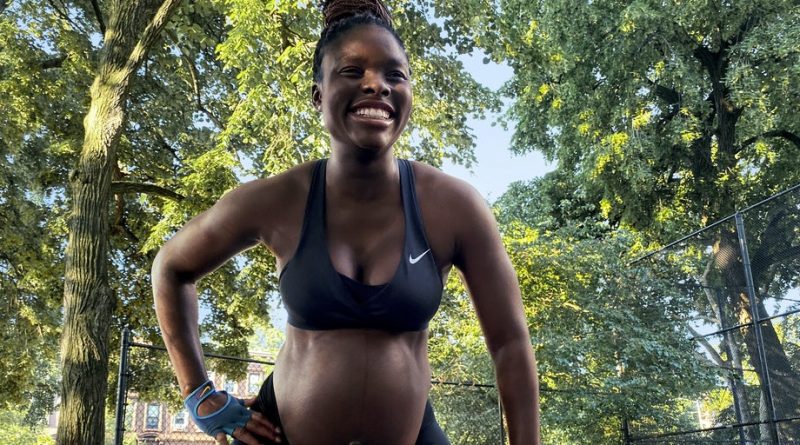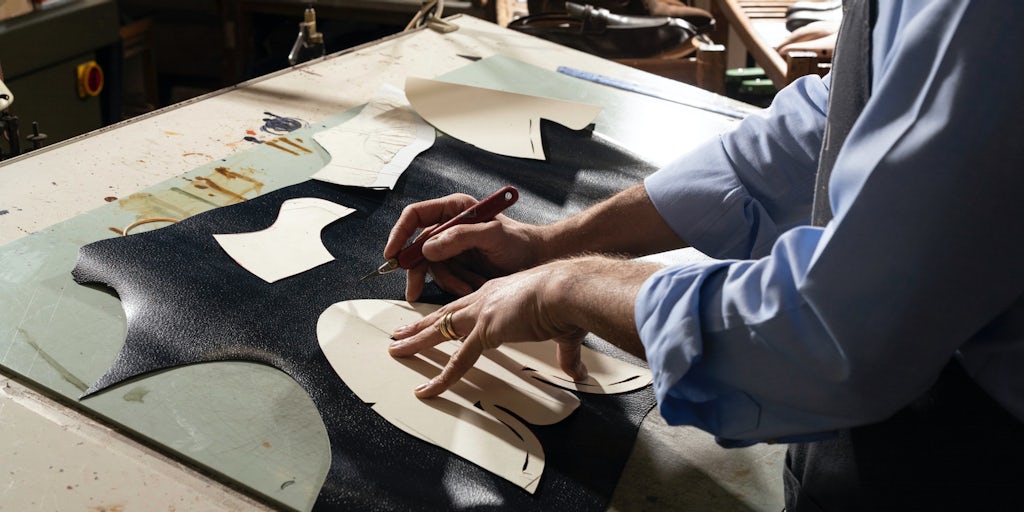The Next Big Activewear Opportunity | News & Analysis, BoF Professional
NEW YORK, United States — Teddi Mellencamp spent a lot of time in her most recent pregnancy frustrated by the kind of workout clothes available on the market.
As the founder of the fitness and nutrition coaching program AllIn by Teddi — who also happens to be on the Bravo reality series “Real Housewives of Beverly Hills” and has nearly one million Instagram followers with whom she shares fitness and lifestyle products and advice — activewear brands send Mellencamp a lot of free product in the hopes that she’ll mention it on her Instagram page or to her clients. Most of the products she tried on while carrying her now six-month-old baby girl had too much compression, or weren’t soft enough, or had seams that dug into her skin.
“I’m not naming any names, but I didn’t love the fabrics,” Mellencamp said. “It’s really hard even to size up in most things like some of my other favourite pants because they roll down or they push into my lower stomach. There’s something that’s missed in the middle … and the focus, really, for us moms when we’re pregnant is that we want to be comfortable.”
Instead, Mellencamp settled on the “Align” leggings from Lululemon, one of the few non-maternity offerings that worked for her activewear needs during her pregnancy because of their softness and seamless waistband, she said.
It’s not that there aren’t any maternity leggings or activewear available on the market — a growing crossover segment of the multi-billion dollar maternity clothing market and the $500 billion-plus activewear market — if the volume of products sent to Mellencamp last year are any indication. But few stand out as particularly appealing to expectant and new moms. Fabrics and seams, among other issues, become uncomfortable as women progress in their pregnancy.
Despite the growth in the overall athleisure market, shopping for workout gear while pregnant is a complicated dance of searching online discussion forums for recommendations and testing products whose fit and fabric are often uncomfortable and dysfunctional. And yet, the market is there, as doctors increasingly encourage women to exercise during pregnancy.
Although niche brands have served this segment for years, their reach has been limited. Now, major activewear players are finally starting to recognise the value in the market and the significance it holds for consumers.
Nike, for instance, will begin selling its first dedicated maternity line, Nike M, to consumers starting September 17. The new collection, which has been in development since 2017, includes four products: a nursing sports bra made with sweat-wicking material that includes a panel for a nursing pump; wide-band leggings; a split-hem jacket for moms-to-be to wear throughout their pregnancy; and a scoop style tank top.
The Nike announcement signals a potential sea change, one that its competitors in women’s athletic apparel — Lululemon and Adidas, neither of which have dedicated maternity lines — are likely to adopt or risk losing out of the significant market opportunity.
The number of maternity activewear styles available online in the US has increased by 58 percent since the start of the year compared to five years ago, according to Edited, a retail market intelligence company that tracks fashion e-commerce sales. Leggings, which are up 171 percent since 2015, have fuelled much of the segment’s growth, as have nursing sports bras, up 45 percent.
“Despite this, it is still a relatively untapped market,” Edited market analyst Kayla Marci said, adding that maternity styles only make up half a percent of the total activewear market available in the US over the past three months.
Many brands that already offer maternity activewear like Blanqi focus exclusively on that segment rather than activewear more broadly, forcing consumers to jump between brands based on where they are in their life. For brands, making the investment in customer acquisition and expensive digital marketing can feel like a hamster wheel, as they only retain that consumer for part of their life.
It was obviously frustrating to me, because it meant that I didn’t have products available to me that I wanted from brands that I trusted and loved.
Non-maternity fashion retailers like D+K, an Australian activewear brand, as well as Gap and Old Navy — which offers tops, bottoms, and nursing-friendly sports bras — are among the few that sell maternity activewear and non-maternity activewear.
One reason for the lack of offerings might have to do with how expensive and time consuming it is for brands to design maternity activewear — and actually get the ergonomics right, given the importance of functionality and comfort to those shoppers.
Cake, a maternity brand available in 46 countries that specialises in nursing bras, expanded into maternity and nursing sports bras in 2014, offering its shoppers a “high impact” style, a term common in sports bra descriptions that indicate the intensity of movement the bra supports. Founded in 2008, the brand also sells pregnancy leggings but is still developing its postpartum leggings.
“The [research and development] cycle is certainly longer and more expensive due to the conflicting nature of support and structure [and] managing that without being uncomfortable on a changing body,” Cake Founder Tracey Montford said.
Nike, for its part, said its maternity products were finalised after testing 70 materials under extreme stretching conditions and applying data from over 150,000 body scans of women’s bodies throughout pregnancy. Nike’s advantage comes in that it has the resources to spend on sports science testing.
For Nike devotees who have also been pregnant, such a development was a long time coming. “I was really shocked and disappointed,” Claire Mazur, a brand consultant and regular runner, said about the experience she had shopping for workout clothes when she was pregnant. On one occasion, Mazur walked into Nike’s flagship store on Broadway in Manhattan’s SoHo neighbourhood before the sportswear giant launched maternity, asking an employee for help finding the maternity section. She was told to try the men’s section or go a size up in women’s.
“It was obviously frustrating to me because it meant that I didn’t have products available to me that I wanted from brands that I trusted and loved,” Mazur said. “From a messaging perspective, it was hugely disappointing and it just felt like, ‘Okay, I no longer belong as part of this brand during this really vulnerable time in my life when exercise is all the more important to me.”
Despite the difficulties in offering quality dedicated maternity activewear, the payoff would be long-lasting for brands that get it right, deepening the relationship between brand and consumer at a critical juncture in her life. “Expanding activewear product offerings in the maternity market will allow brands to grow by reaching new customers, as well as building loyalty among existing customers who would be able to buy athletic clothing during pregnancy,” said Ayako Homma, fashion consultant at Euromonitor International.
“Listen, they’re not the first, but they’re certainly the first of the really big players to do it,” said Mazur of the Nike maternity line launch. “It sends an incredibly important message.”
Related Articles:
How to Make Activewear Without Killing the Planet



:quality(85):upscale()/2023/09/14/809/n/1922564/d3e5d9626503502dea3f15.82261728_.jpg)

